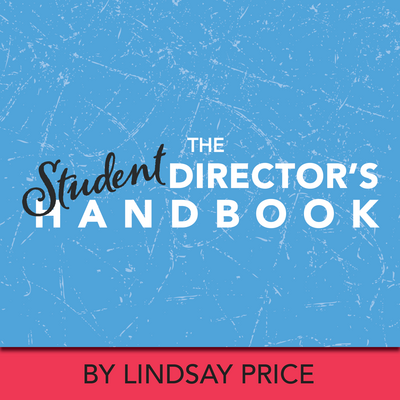Communicating Your Directing Vision Through the Senses
So you’ve selected the show you are producing this year and you have come up with an incredible vision for the show. This is going to be awesome! Obviously, you want your students to share in your excitement – but how will you help your students to clearly understand your vision and buy in to it right away?
Using the senses to communicate your directing vision helps students to really immerse themselves into the world of the show that you will be creating together. Continue to reinforce your vision both before and throughout the rehearsal process. Try the following suggestions to help illustrate your vision and make it super-clear for everyone involved.
Many of the suggestions can fall under two or more senses; work with your students to notice the crossovers.
Sight
- First and foremost, create a vision board with images pulled from the internet or cut from magazines, as well as sketches and drawings. Post it in the rehearsal space so students can see it and refer back to it.
- Use video examples – either clips from previous productions that illustrate what you do (or do not) want to do, or clips from movies, television, or music videos that inspire you.
- Create a visual timeline of the show from beginning to end, using a long roll of newsprint. Include instances that occurred prior to the show that trigger the situations within the show. Have students find or draw images to add to the timeline and make it more visually appealing.
- Create a connections board showing how all the characters in the show are related to each other – marriages, family members, friendships, colleagues, servants/masters, and so on. Have students create images of the character that they are portraying, and then pin them up on a bulletin board. Use yarn or string to connect the characters. Notice if someone isn’t connected to anyone – why is that? Also think about broken connections, such as former friends, exes, or enemies. Use a different colour of yarn to illustrate those connections.
- Find books, magazines, and articles that are either about the show or set in the same time period as the show. Have them available for students to look through when they’re not immediately being used in rehearsal.
Sound
- Create a soundtrack or playlist of songs that inspire your vision. Share it with your students and explain why you selected the songs you did. Have students suggest songs that could be added to the playlist.
- If your show is set in a certain time period, choose a song from that era and play it at the beginning of rehearsal. Who sang the song? Why was it influential to the era? Then let students select songs for upcoming rehearsals. Why did they choose the songs they did?
- When talking about the show, use descriptive language to get students excited. What adjectives and verbs can you use that will get students amped up?
- If your show is set in another country and uses accents, have students listen to internet talk radio stations from those countries to hear what the accents sound like.
Touch
- Create a 3D model or diorama of your set. Create small cutout figures of the actors and move them around the set to demonstrate how transitions and scene changes will work.
- Include tactile materials such as fabric swatches, carpet samples, props and costumes pulled from your stock to use as examples. Allow students to touch the materials and describe how they feel.
- If your show involves specialty props (such as swords or guns) or special effects (such as a swinging rope or a crash mat for stunts) and safety permits, allow your students to touch and try out the items – under supervision of course. This will also help to remove the temptation to play with the items backstage or during pre-show/post-show.
- Have an aesthetics day where students recreate hairstyles and popular makeup looks of the era of when your show is set. This has the additional benefit of giving you the opportunity to select and approve hair and makeup looks for the cast members and gives students the opportunity to find out how to create the styles and how long it takes. They’ll also quickly figure out if they will have to do pre-show prep at home before call time.
Smell/Taste
- Note – Be very careful when approaching smell and taste with students. Be sure you are aware of any allergies or sensitivities that students have to particular foods and scents. If your school is a scent-free zone or has restrictions on what food items can be brought in, combine smell and hearing by using descriptive language and visualization techniques to evoke the smell and taste senses. Also, be sure that any food items are prepared in a clean and safety-approved environment.
- If your show had a signature dish, what would it be? What were the popular meals and drinks of the day? Create a sample menu of what people would commonly consume.
- Look through your script to see if there are any references to food or drinks. Make them for your students to try at an early rehearsal.
- Create a “scentscape” for your students. Have students close their eyes and then talk them through a “scent tour” of the scenes of the play. What does the world of your play smell like? For example, if the show is set in a carnival, describe the scent of crisp fall air, the pungent odor of gasoline from the rides, and the various yummy smells of the food vendors such as cotton candy, candy apples, popcorn, and French fries. If the show is set at a beach, you might smell salty seawater, sunscreen, and various scents from picnics and barbeques.
The Student Director's Handbook
by Lindsay Price
Help students take their show from first audition to opening night with The Student Director’s Handbook. This easy-to-use ebook is full of guidelines, tips and templates designed to help students create a vision, circumvent problems and organize rehearsals on their way to a successful production.
The Rehearsal Companion
by Kerry Hishon
You’ve chosen the play, paid the royalties, done the script analysis, held your auditions, and cast the show. Tomorrow is the first rehearsal. Are you ready? Really ready? The Rehearsal Companion can help!





